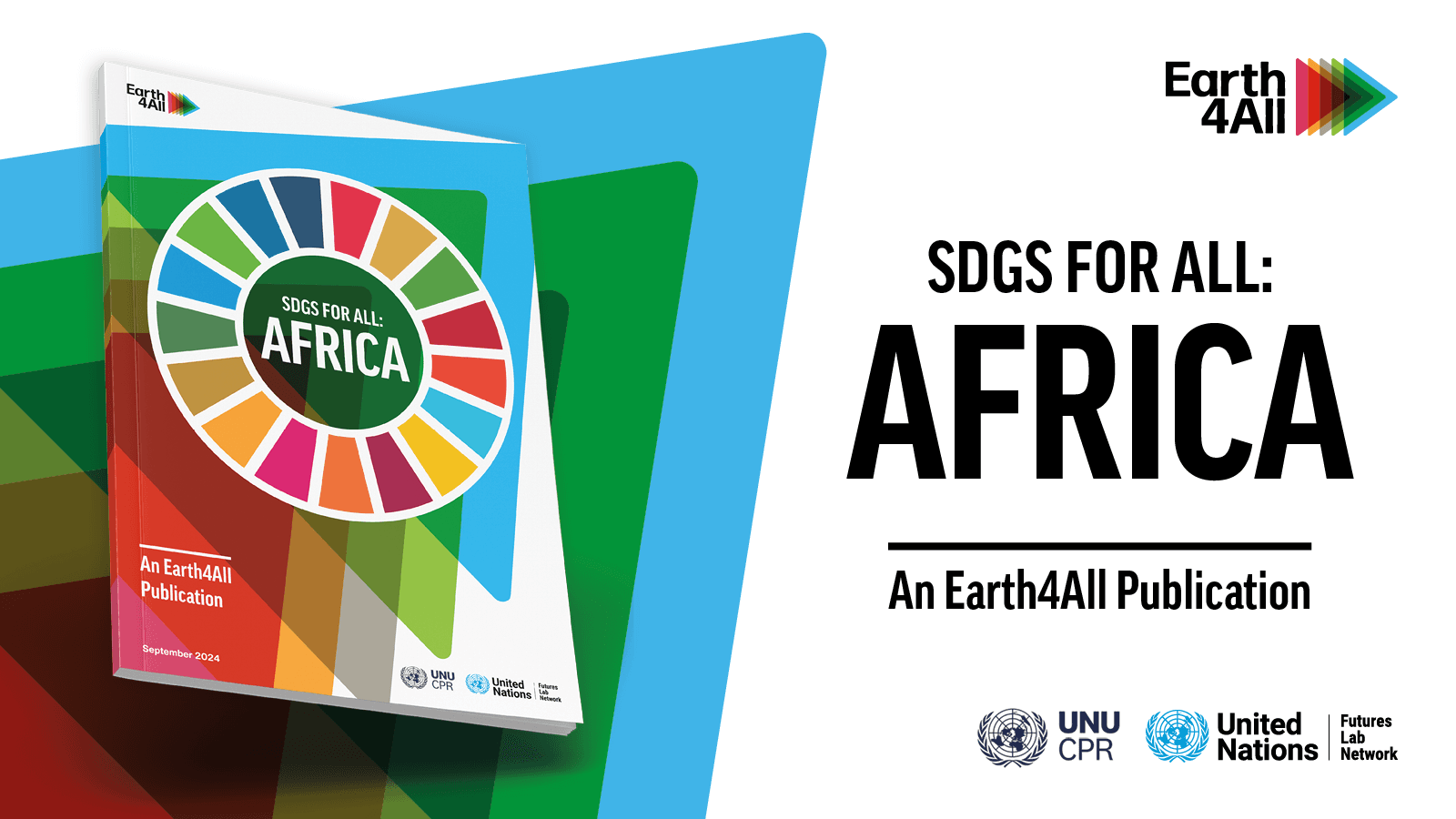Report
SDG for All: Africa
In advance of the UN Summit of the Future, Earth4All has released a new report detailing two possible futures for Sub-Saharan Africa this century. The report, “SDGs for All: Africa,” uses Earth4All’s state-of-the-art system dynamics model to chart possible pathways for SDG implementation in the region. Written in collaboration with notable African sustainability experts, the report emphasises the scale and urgency of economic transformation needed to meet the Sustainable Development Goals (SDGs) in the region.
In the best-case scenario, called the “Giant Leap,” Sub-Saharan Africa could see poverty drop from 500 million to 25 million people, hunger nearly eradicated, and universal access to education, clean water, and sustainable electricity. On the other hand, the “Too Little Too Late” scenario paints a grim picture where poverty rises to 900 million, hunger still affects 180 million, and over a billion people lack clean water. The Too Little Too Late scenario is based on existing policies in the region. These two scenarios highlight the critical importance of action this decade to drive five extraordinary turnarounds in the areas of poverty, inequality, empowerment, food, and energy.
Key highlights from the modelling for Sub-Saharan Africa include:
Poverty reduction: Under the Giant Leap scenario, poverty decreases dramatically from 500 million to 25 million people by 2100, compared to a rise to 900 million under the Too Little Too Late scenario.
Hunger Eradication: Hunger is nearly eradicated in the Giant Leap, with undernourishment dropping to 20 million, in stark contrast to 180 million under the Too Little Too Late scenario.
Education Access: The average schooling years increase to 13, up from 8 years under the Too Little Too Late scenario.
Water Access: Universal water access is achieved by 2070, significantly improving from over one billion without access in the Too Little Too Late scenario.
Electricity Access: Sustainable electricity access reaches over 95% by 2050, compared to 75% still lacking access under the Too Little Too Late scenario.
Climate Mitigation: Carbon emissions are reach acceptable levels by 2040 as opposed to dangerous levels that push global temperatures even higher.
Economic Growth: Decent work and economic growth see significant boosts, with unemployment falling to 50 million by 2100, compared to 150 million in the Too Little Too Late scenario. Workers’ disposable income and GDP per capita also see substantial increases, doubling in comparison to the Too Little Too Late scenario. And inequality is greatly reduced with labour’s share of GDP reaching 60% by 2040, thereby making Africa one of the most equal regions in the world
Project Report
Focus Area
Sustainable Development
Region
Africa
Year
2025






